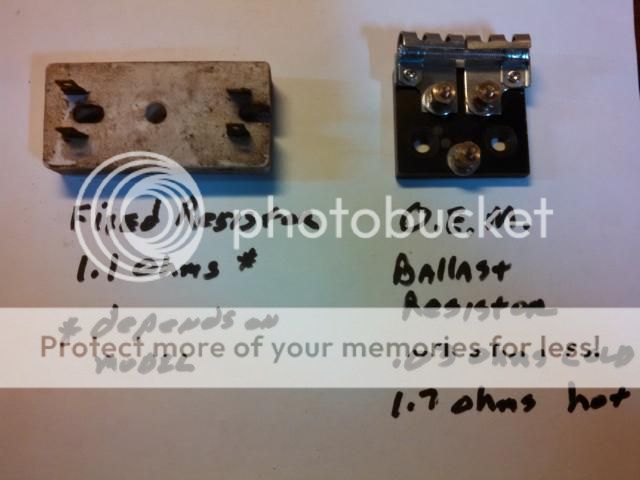47' 8N was running rough. After a while I'd had enough and decided to take a look at the wires to the plugs and distributor. One of the connecting leads was off the distributor - so I re-inserted it and it ran much better.
A hot day - I decided to drag a log back to the house. I progressively had a difficult time I stopped and attempted to start it. I noticed that with all the cranking just as I released the starter button it attempted to fire. This made me recall an earlier post that if the coil is starved of juice it will not output enough to give spark. I was able to start it by rolling it down the hill and popping the clutch in 4th gear and it ran fine.
I parked it under a tree for several hours while I finished the job with my MF30. I decided it was likely the coil - since that is the culprit of most of this tractors mischievous behavior. I remember reading that a heated coil will crap out... but after cooling down it will perform normally.
When the tractor was "room temperature" - it started just fine. I have decided I need to replace the coil.
Here's my questions:
What causes a coil to go bad?
How could my loose wire problem contribute to this?
What's the easiest way to test a bad coil?
A hot day - I decided to drag a log back to the house. I progressively had a difficult time I stopped and attempted to start it. I noticed that with all the cranking just as I released the starter button it attempted to fire. This made me recall an earlier post that if the coil is starved of juice it will not output enough to give spark. I was able to start it by rolling it down the hill and popping the clutch in 4th gear and it ran fine.
I parked it under a tree for several hours while I finished the job with my MF30. I decided it was likely the coil - since that is the culprit of most of this tractors mischievous behavior. I remember reading that a heated coil will crap out... but after cooling down it will perform normally.
When the tractor was "room temperature" - it started just fine. I have decided I need to replace the coil.
Here's my questions:
What causes a coil to go bad?
How could my loose wire problem contribute to this?
What's the easiest way to test a bad coil?










